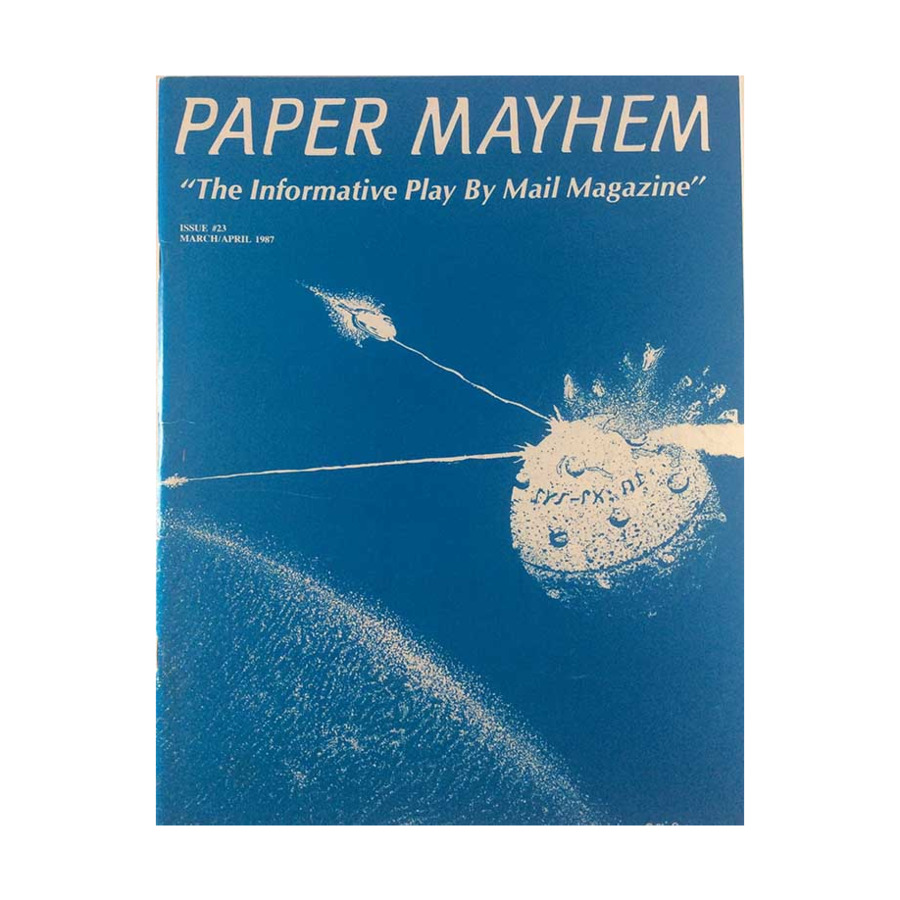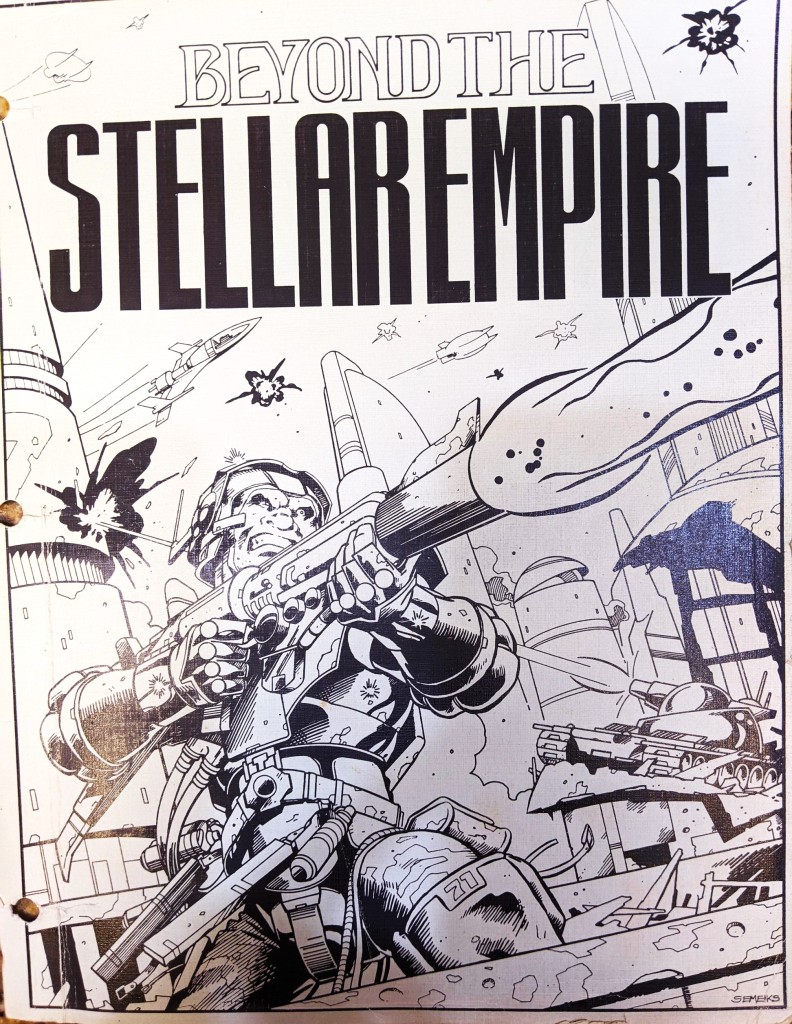PBM and BSE: Play-by-Mail and Beyond the Stellar Empire
The subhead of my science fiction novel Chipped is: A Beyond the Stella Empire Adventure.
Beyond the Stellar Empire or BSE is a play-by-mail (PBM) game that I took part in during the 1980s and 1990s. Never heard of PBM? Not surprising because it’s a gaming genre that died out around 2000 with the release of bigger and better computer games.
A little history. Before the age of home computers, everyone played games face to face. Chess, checkers, Scrabble, Monopoly, Dungeons & Dragons. If you wanted to get fancy, you could play games like chess by mail. Sure, it took longer, but players didn’t mind waiting to receive their opponent’s move. Prior to the rise of our instant gratification society, anticipation used to be part of the fun.
In the 1980s, chess by mail exploded into an entirely new type of gaming: PBM. It lasted about 20 years and was supported by magazines like Paper Mayhem, Flagship and Gaming Universal.
I played my first PBM game, Feudal Lords, run by a company called Graaf Simulations in 1984. A medieval game, you competed against 15 players to become the King of England. With the simple rule book came a card that you filled out with your moves that you mailed in once a week. Turns cost $2.50.
After about 20 moves someone eliminated the other players. I won my first Feudal Lords game. Not that I am a tactical genius. I did it because Graaf supplied you with a list of the other players and their addresses. Playing as the Earl of Lancaster, I wrote to the Earl of Cornwall, a fellow in Pittsburgh named Tim Enright, and we teamed up. Tim supported my moves, and in the next game I supported him, and he won.
We did this before the invention of email. We did it communicating primarily through letters with the occasional call using a phone with a cord.
In 1985, Tim told me about a game he was playing called Beyond the Stellar Empire. It was run by a company out of Cohoes, NY, named Adventures by Mail. Like Feudal Lords, you submitted turns once a week, at the end of which you received a computer print-out of your results. Companies owned computers, but not individuals, so receiving a custom print-out in the 1980s was quite a thrill. According to ABM, the game was “hand moderated with computer assistance.”
BSE was not a game that could be won in 20 moves. It was known as a ‘space opera,’ the granddaddy of today’s Massively Multiplayer Online Games. For your $5 turn, you ran a single starship. Ever want to play Capt. Kirk and explore the vastness of space? Here was your chance.
I am not the brainchild that invented the universe where Chipped takes place. ABM did. Specifically, Robert Cook and Jack Everitt. ABM employees Mike Popolizio, Marti Popolizio and Liz Leblanc ran the turns and interacted with the players. They created a world that was like playing pen ‘n paper D&D in a space aged Middle Earth that spread across 100+ unexplored star systems.
The events in Chipped are loosely based on things I experienced while playing BSE from 1985-88. I say all of this to give credit where credit is due. ABM provided the backdrop, into which I’ve inserted my own creations, like the chip, cyber telepathy, Pax Hawkins, Hacker Jack Sterling, genetics, and birthers.
Some of the people populating the novel are based on player-run characters I met while playing BSE. For instance, I knew the pirate king Sean O’Brien’s player Greg Stafford of Massachusetts, and the scientist Lord Retief’s alter ego, Chip Charnley from Michigan.
I am hoping that if Chipped finds its way into the hands of BSE’s players, they are not offended by what I did with their character, and that they will take my story in the spirit intended, as fan fiction inspired by a unique era in gaming that is long gone.


